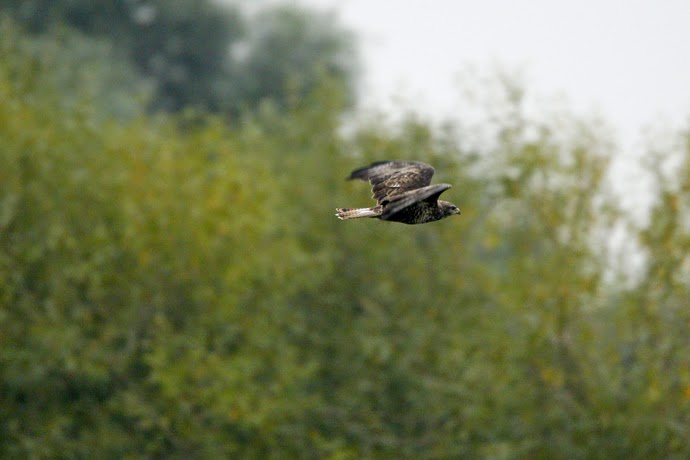It's the end of summer - reflected in the wildlife and the work on the reserve. Photo Pete McKenzie:
A big annual job is cutting the meadows to ensure next year's crop of orchids comes through. Much has been done both by volunteers and contractors in recent days:
Another technique we use is the slash and burn, the idea being to removed thatch and organic material from the soil - taking it back to bare earth and removing competition for the more delicate species. Lukas starts the blaze:
We have also burnt the island on SMW - we alternate each side annually and it results in very nice clean reed bed in which we found the abandoned nests of two reed warbler and a water rail:
Water rails have been quite active around the reserve - this individual delighted those on Saturday's reserve walk - picture by Bill Eggleton:
Something a little different; rail on a rail by Darren Smith:
The spotted crake did not linger - but we've been amazed by the vast numbers of common snipe - 46 last Tuesday and reports of 72 later in the week and 60 yesterday on South Marsh East. Airborne by
Roy Vincent:
Brian Colley:
And Alan Walkington:
Otherwise an excellent 10+ green sandpiper were the peak since the last post with 10+ common sandpiper, and 4 ruff on the 3rd. Greens by Roy Vincent:
Brian Colley:
A ringed plover and little ringed plover were both present in the last week of August, up to 2 greenshank and up to three garganey. All were not best pleased with this young male marsh harrier which has been harrying the marshes of late; Roy Vincent:
And Andy Marshall:
Up to three in the week with many migrating over as per Martin's
blog with spotted flycatcher details - a nice sighting although tinged with sadness its only on migration. Also predating the marsh was little egret at point blank range - Francis Bell:
And Bill Eggleton:
Who also snapped this stoat:
And attentive Sparrowhawk:
Along with this kingfisher - specialising in catching marsh frog tadpoles from the electric fence - Brian Colley:
Adult marsh frog - the tadpoles take much longer to develop than the conventional native - Brian Colley:
Fodder for young little grebes too:
The familiar few were present on the North Marsh - Maurice Dowson:
And Roy Vincent:
Otters have been showing too in the last few days - both for Steve Brimble:
Good news is that we have managed to remove two mink in as many weeks - unfortunately not this second male we believe that was photographed by Brian Colley along with the one in the last post:
Roe deer by Pete Drury:
And a bat sp. by Brian Colley:
Med gull and yellow legged gull have been on the res's in recent days with many great crested grebes giving excellent photo ops on the O reservoir. Barnacle goose has been a welcome spice in amongst the feral greylag flock that has now conglomerated, and up to six red crested pochard have been about for two weeks - though likely of equal provenance. Lots of cuckoos around too before the second brood head south - Brian Colley:
Several hobby predating dragonflies on North Marsh - and a young common buzzard Steve Brimble:
Star of stage and screen - barn owls - in case you didn't see the Look North piece. The headline is that the North Marsh pair have reared 9 young this year - the highest amount in a year and also the first time for two broods - Roy Vincent:
All thanks to these fella's - bank voles under the feeders - Brian Colley.
Common buzzard after bigger fayre - lots of rabbits with myxy at the moment giving easy meals - Pete Drury:
And Steve Brimble:
Also on the access road have been up to 36 yellow wagtails going south, along with meadow pipits, white wagtail and linnet. Another yellow migrant - clouded yellow by Maurice Dowson:
The last of 5 common tern chicks to fledge went last week - Eddie Laker:























.JPG)














.JPG)
.JPG)
.JPG)
















.JPG)

